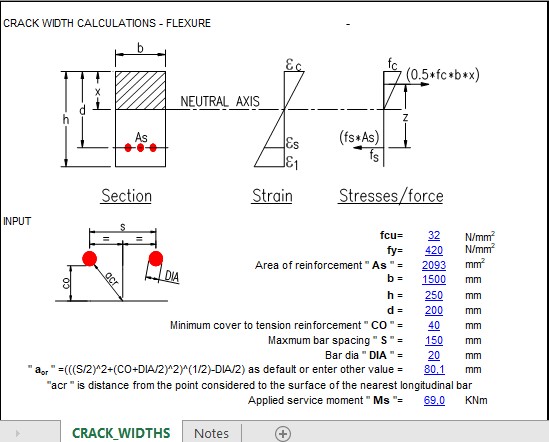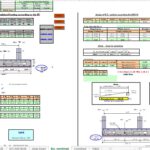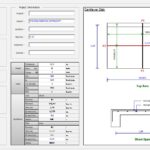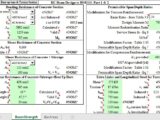
Crack Width Calculations Spreadsheet
10 December 2022Table of Contents
Crack Width Calculations Spreadsheet
Cracks in construction are a common concern for property owners, builders, and engineers. While they may appear as minor imperfections, cracks can indicate deeper structural issues if not addressed promptly. Understanding the causes, types, and solutions for cracks can help ensure the safety, longevity, and aesthetic appeal of any structure.
What Causes Cracks in Construction?
Cracks can develop in construction due to a variety of factors, including:
- Settlement of the Foundation: As a building settles over time, uneven settlement can lead to cracks in walls, floors, and foundations.
- Thermal Expansion and Contraction: Variations in temperature cause materials like concrete and masonry to expand and contract, leading to stress and eventual cracking.
- Moisture Changes: Excessive moisture can weaken materials, while drying can cause shrinkage cracks. Poor drainage or water infiltration exacerbates the issue.
- Structural Overloading: When a structure is subjected to loads beyond its design capacity, it can lead to stress cracks.
- Poor Construction Practices: Improper curing of concrete, inadequate reinforcement, or use of substandard materials often results in cracks.
- Vibrations and External Forces: Vibrations from nearby construction, earthquakes, or heavy traffic can weaken structures over time, causing cracks.
Types of Cracks in Construction
Cracks can be broadly categorized based on their appearance and underlying causes:
- Structural Cracks:
- Caused by incorrect design, overloading, or foundation issues.
- Examples: Horizontal cracks in walls, wide vertical cracks in load-bearing structures.
- Non-Structural Cracks:
- Result from environmental factors like moisture changes or thermal movement.
- Examples: Hairline cracks, plaster cracks, or shrinkage cracks.
- Active Cracks:
- These widen over time due to ongoing structural movements or environmental changes.
- Requires immediate attention to prevent further damage.
- Dormant Cracks:
- Stabilized cracks that do not expand further.
- Typically require cosmetic repair unless they compromise aesthetics.
Identifying Serious Cracks
While minor cracks may not require extensive repairs, certain cracks indicate severe problems:
- Cracks wider than 3mm.
- Horizontal cracks in load-bearing walls.
- Cracks accompanied by water seepage.
- Stair-step cracks in masonry walls.
Solutions to Address Cracks in Construction
Addressing cracks depends on their type and severity. Here are some common solutions:
- For Minor Cracks:
- Filling: Use crack fillers or sealants for hairline and non-structural cracks.
- Repainting: After filling, repaint to restore aesthetics.
- For Structural Cracks:
- Epoxy Injection: Inject epoxy resin to bond and restore structural integrity.
- Reinforcement: Strengthen the affected area with additional reinforcements like steel bars or fiber-reinforced polymers.
- Foundation Repair: Address foundation settlement issues with underpinning or grouting.
- Preventive Measures:
- Ensure proper drainage around the structure to minimize moisture-related issues.
- Use high-quality materials and adhere to recommended curing practices.
- Regularly inspect and maintain the building to catch issues early.
Preventing Cracks in Future Construction
Prevention is always better than repair. Here are some strategies to avoid cracks in new constructions:
- Conduct thorough soil testing before laying the foundation.
- Design the structure to accommodate thermal and moisture movements.
- Use proper reinforcement and high-quality materials.
- Follow best practices for concrete curing and masonry work.
- Ensure proper drainage and waterproofing measures are in place.
Conclusion
Cracks in construction can range from superficial blemishes to serious structural concerns. Understanding their causes and addressing them appropriately ensures the safety and durability of a building. Regular maintenance, quality construction practices, and timely interventions are key to preventing and managing cracks effectively. By staying proactive, property owners and builders can protect their investments and maintain the structural integrity of their projects for years to come.








